This was published 5 years ago
The final frontier: A 15-day tour of Siberia from St Petersburg
By Catherine Marshall
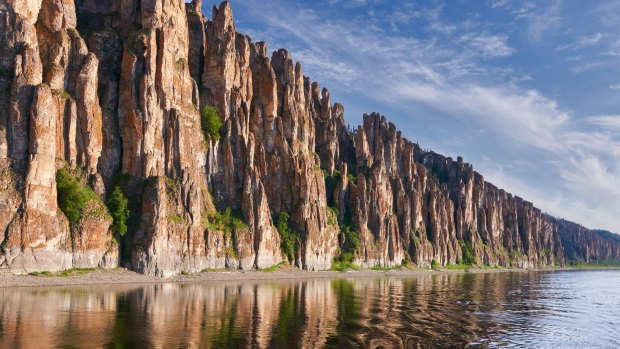
Lena Pillars, bank of Lena river, Yakutia.Credit: Alamy
Siberia is the final frontier. It exists like a phantom in my consciousness, a mythical concept rather than an actual place. It is white and gauzy and indistinct, an allegory for bleak skies flecked with sleet and grasslands painted with frost. It is a mystery that inches towards me with every click of the train's wheels.
I've placed my books in a neat stack on the table beside my bunk in compartment No.11: Dostoyevsky, Solzhenitsyn; notebooks in which to record my impressions of the journey that lies ahead. The train pulls out of St Petersburg's Ladozhskaya Station and gains swift momentum so that soon it has shaken off the city's brutalist apartment blocks and low-slung powerlines and is barrelling through copses of fir trees.
Dostoyevsky made this journey, too; but where he was shackled and hauled upon a sled to a prison camp in Siberia's Omsk, I'm travelling unregulated by second-class sleeper train to the remote outpost of Salekhard. From there I will venture northwards to the Yamal Peninsula to a camp as unfettered as Dostoyevsky's was incarcerating: a huddle of chums (tents) casually erected on the tundra by one of the world's last remaining traditional cultures, the indigenous Nenets reindeer herders.
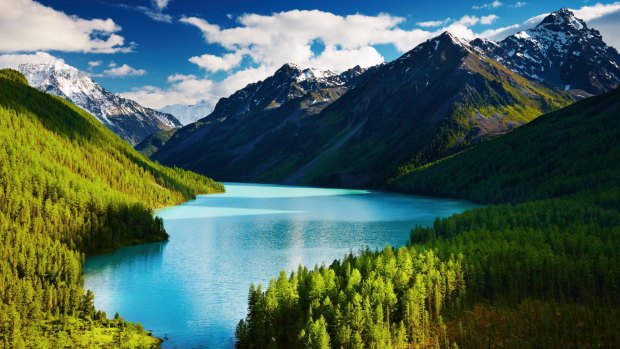
Lake Kucherlinskoe in the Altai mountains.Credit: Alamy
Our provodnitsa (carriage attendant) delivers fresh linen to our compartment, and my three cabin-mates and I arrange ourselves as comfortably as we can within the confines of this narrow, double-bunked space. Our food supplies are tucked beneath the table – instant noodles and mashed potatoes that we prepare with hot water from the samovar at the far end of the carriage; condensed milk with which to sweeten our coffee.
Outside, scenes blur one into the other, bright-painted houses framed by pink fireweed, rusted rooftops protruding from waves of sky-high grass, rotting boats washed upon a river's shore. The train's soporific rhythm is broken occasionally for stops at stations marooned upon the emptiness. Hawkers await us; we buy fresh bread and buckets of berries and forest mushrooms from their stalls.
After sunset, in the rudimentary dining car, locals greet us in a hard-edged flourish. An immaculately dressed miner is getting smashed on Baltica beer. A muscular scrap metal dealer is guzzling broiled chicken. A teary-eyed Estonian is reminiscing about the years he spent working in Siberia during the Cold War; this will be his first visit there in 34 years.
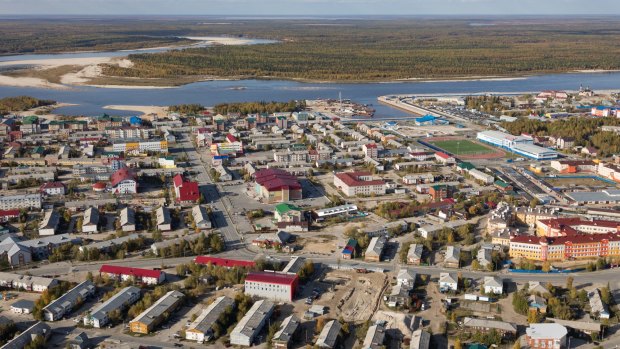
Tarko-sale town, Yamalo-Nenets Autonomous Okrug.Credit: Alamy
VELIKIY USTYUG TO SALEKHARD
It's taken 22 hours to get here, and we've made but the tiniest of incursions into Russia's eternal heartland. The Estonian was sleeping when we disembarked this morning, but he'd placed a gift in our compartment: a bottle of Estonian liqueur wrapped in a page torn from a soft porn magazine.
The suffocating snows have melted to reveal a vista of cow bream and wildflowers. They lap at the estuaries converging at the ancient fortress town of Velikiy Ustyug, waterways once thick with explorers and traders. By the 1990s they'd thickened with silt, and when the rains came the rivers spilled into houses and across farmland. The Sukhona River has been dredged since, says local guide Lyubov Nalyotova.
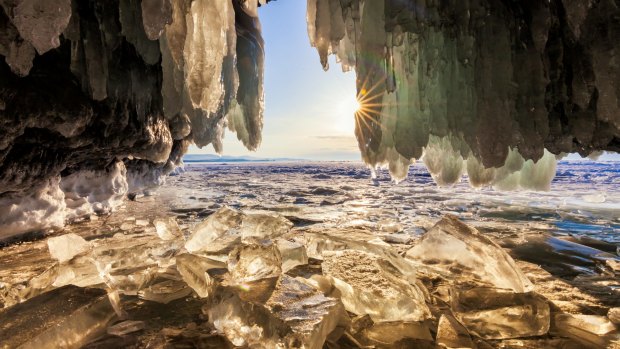
The view from the ice grotto at sunrise, Lake Baikal.Credit: Alamy
"It looks calm, but it has changed its bed many times," she says, gazing across its silken surface towards a copper-domed monastery on the opposite bank. "It is perfidious."
The town escaped an altogether more disquieting perfidy during the communist era, when the destruction of religious and cultural icons stopped just short of its perimeters. The railway doesn't reach Velikiy Ustyug (we journey there by road), and so structures that might otherwise have been razed – shiny-domed cathedrals, flaking belltowers – rise exultant from their ragtag foundations.
TRAVELLING THE DEATH ROAD
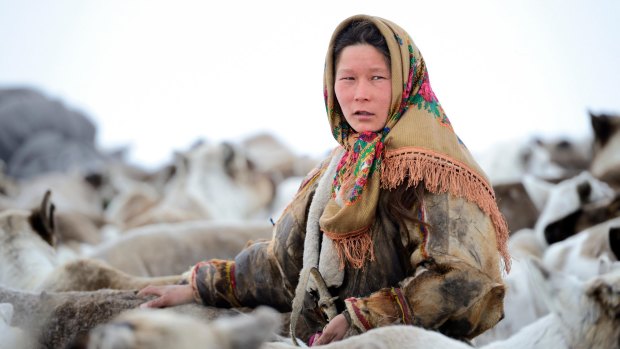
Ekaterina Yaptik, a Nenets herder woman, selecting draught reindeer from a corral.Credit: Alamy
So much of Russia's history is contained in the railway line that stretches from nearby Kotlas – where we reboard the train – to Salekhard. Prisoners flocked to the Gulag Archipelago of which Solzhenitsyn writes; indeed, they laid the very rails on which we now turn. The clacking wheels evoke more recent memories for our Intrepid guide, Ksenia Martynova, who was a baby when communism fell. Her parents lost their jobs overnight; her mother would journey by train to Moscow and St Petersburg to buy goods to trade back home in the Ural Mountains.
"People literally were hiding money in their underwear," she says. "We had no food, just bread and milk, that's all."
As if to corroborate this tale of capitalist paucity, we pass a defunct flour mill and sagging houses adrift in an ocean of blooming Sally. Heather-cloaked plains sail across our windows; the Urals arise in gentle waves. Day turns slowly into night.
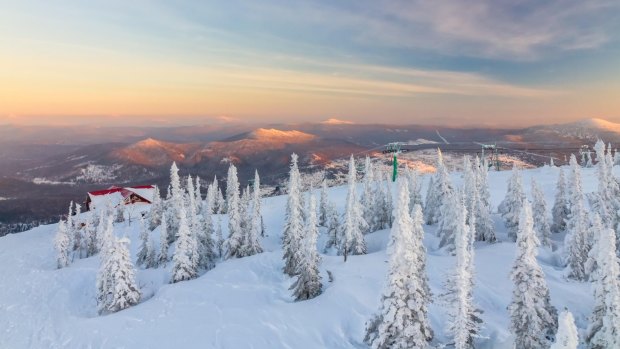
A winter sunset from the mountain top in Sheregesh, Siberia.Credit: Alamy
In the morning we pull into the town of Chum, the original starting point for Stalin's doomed transpolar railway. He intended for it to jump the River Ob and stretch all the way to the Chukotka Peninsula in Russia's Far East. But the line beyond Salekhard putrefied into marshland, taking the lives of innumerable men with it.
The tracks peter out at Labytnangi, and we take a ferry across the River Ob to Salekhard, the only city in the world that sits directly on the Arctic Circle. Its 15th-century Cossack history is glossed over with shiny buildings – dividends from the vast gas reserves mined on the Yamal Peninsula.
ABOVE THE 66TH PARALLEL
It takes 10 hours to navigate the 170 kilometres that lie between Salekhard and our first night's camp in the Yamal-Nenets Autonomous Okrug. Dirt roads buckle into corrugated tracks; tracks slide into rivers and re-emerge on the other side boggy and mud-slicked; mud trails sink into the tundra until there remains no trace of them at all.
The Siberia of my imagination – white, gauzy, indistinct – morphs into an emerald wilderness quivering with sedge and lit by a watery sun. Not even the giant-tyred Trekol swamp buggies and Cold War-era Russian tanks in which we travel can cushion our bones against this jarring, untamed landscape.
The tanks' engines scream with exertion, their tread gouges caterpillar tracks into the pulpous earth. Stunted firs – the last of the transitional forest – disrupt the steppe. The snow that engulfs this region for much of the year has left behind traces of its essence: glassy lakes and rivers coiling dreamily across the tundra. Finally, as the sun is about to set, we see the spires of a Russian Orthodox Church emerging from the horizon.
This is the Land of Hope, a permanent settlement where Nenets children attend a school for nomads. The students have returned to their families' camps for the summer – a season, in Siberia, of "intolerable closeness", as Dostoyevsky described it. His evocation rings true, for though the skies are threatening rain and the stoves have been lit inside our chums, the mosquitoes are a plague unleashed by summer's damp embrace. They are beasts, speckling our clothes and taking monstrous bites right through them.
In search of nomads We wake next morning to the sound of rain spattering the chum. Breakfast is fish soup and belyashi, doughy bread rolls stuffed with pork. Everyone goes back for seconds.
"If you want to know what it's like to live on the tundra, there is only one thing to do," says one of our drivers as we place offerings of coins upon a crop of sacred rocks. "Go there."
Hours of travel stretch ahead of us still, interminable expanses of pasturage rising and falling in steep folds, yielding beneath the Trekol's mighty tyres and the tanks' metallic tracks. And then, finally, they appear, four chums standing lonely on the plain. A river curls around the campsite; hills encircle it. Dogs raise their muzzles to our unfamiliar scent. A tent flap opens, and a Nenets woman emerges from the gloom.
REACHING THE END OF THE WORLD
Our quest has ended at the "end of land", a permafrost peninsula stretching for around 700 kilometres into the Arctic Ocean. These are the ancient roaming grounds of the Nenets, Russia's indigenous reindeer herders. They've somehow preserved their nomadic lifestyle in the shadow of modernity: gas mining, the lure of cities, climate change. In summer they drift northwards, and as the weather cools they move south. In recent years, warmer temperatures have delayed their winter trek across the usually frozen River Ob.
Two families live in this temporary camp, says Anna Nerkagi, the woman who has greeted us; 10 people in all. The men are off with the reindeer herd and they will return before dark. She leads us into our chum, a surprisingly uncramped space enclosed in swathes of canvas and felt that will be replaced with reindeer pelts once winter sets in. A wood stove is encircled by bedding: furs and quilts and pillows laid out directly upon the tundra.
LAST OF THE REINDEER HERDERS
Wild reindeer have roamed this peninsula for eons, following ancient seasonal migratory routes in search of food. In recent centuries they've been domesticated by the Nenets, corralled into herds up to 10,000 strong; they supply them with their most urgent needs: food from their flesh, clothing from their skins, tools from their bones.
We can tell that they are approaching now, for the spongy earth vibrates beneath our feet. We emerge from the chum to see the dark mass of a herd spilling over the riverbank. Men on sleds and Samoyed dogs urge them on. They swarm up onto the plain, their dew claws clicking like castanets. Their coats are damp with sweat, their antlers clouded in haloes of fur.
Night descends, a corona of half-dark hovering upon the horizon. We eat salted salmon and pike, boiled cabbage and tomatoes. Fatigued beyond reasoning, we fall into a deep and curative sleep.
DEATH ON THE TUNDRA
It's raining softly next morning. The Nenets men walk out onto the tundra and swing their lassos into the sky. The reindeer herd erupts, a frenzied dance of dark bodies and shining eyes and curlicue antlers slicing the air.
A female is separated from the herd. A Nenets sits with the frightened animal, giving thanks for her sacrifice. The men loop a rope around her neck, and pull tightly on either end until she drops, strangled, to the ground. Her neck is sliced open and the artery tied so that blood – a precious resource in the Arctic – can collect in her abdominal cavity.
The feasting begins at once. Salt is poured into the bloody hollow, slivers of raw liver dipped into it. I sweep a piece of barely dead flesh through the salted pool and raise it to my lips. It is fresh and warm and profound, the most honest meat I have ever tasted.
That night's dinner is reindeer stew and reindeer broth, eaten around a low table in Nerkagi's chum. The carcass will feed these families for three months. No part of it seems to have been wasted: not the skin, peeled off in a single pelt; not the innards, fed to the dogs; not the coarse hair of the forehead, affixed as traction to the soles of shoes.
Only the muscles of the spine and neck are discarded, lest their consumption weaken the herd; and the tip of the tongue, which is thrown into the fire to prevent the spread of rumours.
THE LONG JOURNEY HOME
It takes 14 hours to return to Salekhard. We travel by tank, Trekol and – when the river proves too high to navigate – boat. A group of Russian canoeists welcomes us into their camp and feeds us lard and pate, tea and homemade vodka.
We offer, in hospitable turn, a lift to a Nenets boy making the day-long trek back to his family's chum.
He tells us about his parents' reindeer herd, how winters of -50C are preferable to the mosquitoes that summer brings with it. We wave him goodbye somewhere in the middle of nowhere, and watch as he dissolves into a pinprick on the horizon.
Long after midnight, somewhere above the 66th parallel, we see green smudges in the sky. It is the aurora borealis, crowning the infinite landscape over which we have laboured, probing it with tentacles of light, mocking the Siberia I've conjured in my dark and desolate imagination.
Catherine Marshall was a guest of Intrepid.
FIVE MORE THINGS TO DO IN SIBERIA
TAKE THE TRANS-SIBERIAN EXPRESS
Conjuring romance and adventure, this epic rail journey between Moscow in the west and Vladivostok in Russia's Far East extends for more than 9000 kilometres across a diverse landscape – forests, mountains, rivers, plains – and no fewer than eight time-zones. Though popular with tourists, its chief purpose is the transport of domestic passengers and cargo, giving travellers a unique insight into the Siberian way of life.
EXPLORE LAKE BAIKAL
Perhaps Siberia's most famous landmark, this UNESCO World Heritage site is the world's deepest lake and its largest freshwater lake, a veritable inland sea spreading across a rift valley near the border with Mongolia. It is framed by snowy peaks and Siberian taiga forests, and filled with a profusion of endemic aquatic species, including seals. Activities include hiking, swimming and – if you're visiting during winter – hover-crafting and ice-biking.
SKI IN SHEREGESH
This remote iron-mining settlement in southern Siberia's alpine region has become one of Russia's most popular ski resorts since slopes were built here in 1981. Cold, dry winters ensure season-long dumps of champagne powder snow, turning Sheregesh into a skiers' paradise. Yeti-hunters have also started streaming in since the footprint of the Siberian Bigfoot was allegedly discovered in a nearby cave.
TREK IN THE ALTAI MOUNTAINS
Located at the junction of Siberia, Mongolia, Kazakhstan and China, the Altai Republic – a federal subject of Russia – is a remote, forested area popular among climbers, trekkers and rafters. Siberia's highest peak, Mt Belukha, is located here, and the region provides habitat for the endangered snow leopard and Siberian mountain goats. A fledgling eco-tourism industry in the region is being nurtured by conservation bodies.
TAKE A RIVER CRUISE TO THE ARCTIC CIRCLE
The River Lena – one of the longest in the world – winds through ever-changing landscapes from the central-Siberian city of Yakutsk all the way to Arctic Circle, where it empties into the ocean via a network of granite-walled estuaries. Here, nomadic reindeer herders still live a traditional way of life and in summer the sun doesn't set, earning it the nickname "land of the midnight sun".
SURVIVING SIBERIA
HOT AND COLD
The temperatures here vary wildly, from a deathly cold -60C in winter to a surprisingly balmy +30C in summer. For much of the year, multiple layers of thermal clothing are essential. Jackets should cover the legs and hats, gloves (with inners) and tube scarves should be worn to protect the extremities from frostbite. It's best to consult a specialist cold-weather clothing supplier when kitting yourself out. During the short summer months, cool, comfortable clothing can be worn in the cities, but full coverage in lightweight clothing is recommended in areas inundated with insects. Always take along a warm jacket – despite the comparatively high summer temperatures, the evenings can be cold.
INSECTS
First-time visitors to Siberia will be shocked to discover that the region's brief summers bring with them a veritable deluge of insects. Ticks are common, but the most annoying pest is the tundra mosquito, which is much larger than regular mozzies and congregates around people's faces and bodies in great, biting swarms. They're best avoided by wearing mozzie nets, waterproof pants and jackets and insect repellent. Check your body and clothing for ticks after walking though bushy areas.
FOOD
If you're visiting in winter, be prepared to eat. And eat. The Siberian climate cannot be endured by those who don't possess a healthy appetite (and a strong immune system – for permanent residents at any rate). Energy is gobbled up by the intense cold, and vegetarians who move here often find they can't function adequately without eating meat. The good news is that regional specialities are delicious and plentiful – and there's always condensed milk to sweeten coffee and tea and provide a sugar hit. Menu options for vegetarians are limited to soups, eggs, cheese, fruit and vegetables, bread and yoghurt. Vegans and those on gluten-free diets will find travel in this region challenging, although suitable supplies are usually available in supermarkets.
ALCOHOL
Siberia is renowned for its good vodka – and, on a darker note, its high rates of alcoholism. It is common for locals to strike up conversation with foreign travellers (most often in Russian) and to share their food and drink with them. While this is part of the charm of train travel across Siberia, the alcohol offered is sometimes fake, and the locals' tolerance is often much higher than one's own. For this reason, travellers should take care not to partake in, or encourage, heavy drinking when engaging with locals. Moreover, drunken behaviour can attract fines or removal from the train without warning.
TRANSPORT
Siberia's interminable girth and relative lack of development necessitate long, and sometimes less-than-comfortable journeys. This is not the destination for travellers who depend on five-star comfort: train carriages are compact and might have to be shared with strangers; journeys along back roads and across tundra can be bumpy and downright rough. But for the type of traveller attracted to a place like Siberia, it's exactly what adventure is made of.
TRIP NOTES
MORE
FLY
Qatar Airways flies daily from Sydney and Melbourne to Doha, and daily from Canberra to Doha via Sydney, with connections from Doha to St Petersburg and Moscow. See qatarairways.com
TOUR
Intrepid's 15-day Footsteps of the Reindeer Herders expedition departs on July 26 and August 9, 2018 and starts from $4095 per person, including four nights on the trans-polar railway, hotel accommodation, camping with the Nenets on the Yamal Peninsula and a variety of city and rural excursions. See intrepidtravel.com/au
SAFETY
The recent expulsion of Russian diplomats from Australia and other western countries might result in anti-Western sentiment or harassment of Australians travelling in Russia. While there have been no reports thus far of Australians experiencing such difficulties, they are advised to keep an eye out for security and political warnings. As always, remain vigilant, avoid protests and demonstrations and avoid commenting publicly on political developments. Travellers are advised, as before, to exercise a high degree of caution and to avoid certain areas. See smartraveller.gov.au
Sign up for the Traveller Deals newsletter
Get exclusive travel deals delivered straight to your inbox. Sign up now.